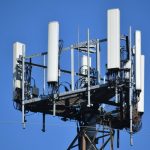This is shown by market data from the Croatian Regulatory Authority for Network Industries (HAKOM).
“Internet traffic rose by 26.5% on the year. We talked much more on mobile phones, and total revenue in the electronic communications market went up by 3.3%,” HAKOM said.
Continued decline in fixed and increase in mobile networks
According to HAKOM’s data, fixed communications were the only segment in that market that didn’t see an increase and continued to decline, with total revenue dropping by 4% compared with Q1 2020, to HRK 269.4 million, while the number of users decreased by 1.4%, to 1.2 million. They spent 404.2 million minutes in those networks, or 7% fewer.
Those networks also saw a drop in revenue from broadband Internet access services of 8.2%.
On the other hand, mobile networks registered an increase in total revenue of 2%, to HRK 889 million, while the number of users remained stable, 4.36 million.
However, due to the pandemic and less tourist traffic, phone calls made by Croatian users in international mobile networks saw a decrease of 14.2%. In comparison, phone calls made by foreign users in Croatian mobile networks saw a drop of 7.9%.
Mobile networks also increased revenue by 16%, or HRK 756.1 million, from broadband Internet access services compared with Q1 2020, while total revenue from those services went up by 5.4% in Q1 2021, to HRK 1.2 billion.
Market shares of mobile network operators remained similar to last year, with Hrvatski Telekom (HT) having the largest share of 46%, followed by A1 Hrvatska (35%) and Telemach Hrvatska (19.4%).
Total revenue in the electronic communications market increased by 3.3% from Q1 2020, with revenues increasing by 9.2% in the broadband Internet access market, by 3.5% in the television services market, and by 7.7% in the network and line rental services market, HAKOM said.
They stress that despite a slight decline in total investment in that market since the beginning of the year, investment in fiber access infrastructure saw a sharp rise of 140% on the year, which they consider important for maintaining the growth trend in the number of high-speed broadband connections.
For more, follow our lifestyle section.












